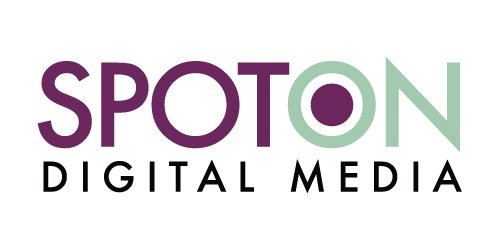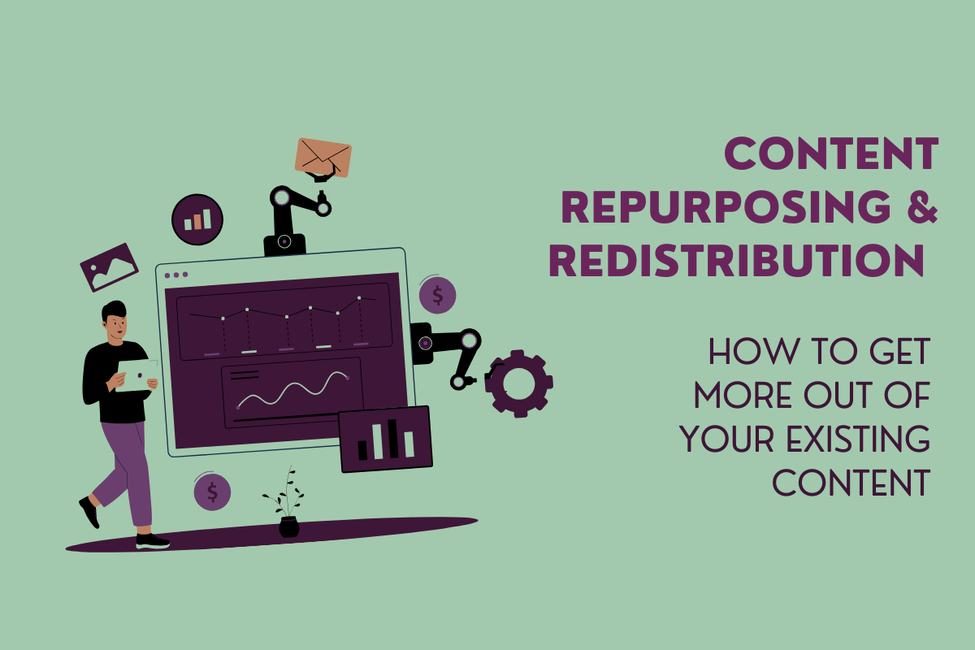How to Stretch Your Content and Get More Use With Repurposing and Redistribution
You put a lot of work into creating great content. You spend time and resources generating ideas, writing copy, designing graphics, and editing videos — so make sure you get the most out of each valuable asset.
Don’t publish your content one time on one platform. Instead, stretch each of your assets using thoughtful repurposing and redistribution.
What Is Content Repurposing and Redistribution?
Content repurposing and redistribution is taking an existing piece of content and reengineering and reposting it to use it in other ways.
Almost all brands create content. Whether or not you engage in creative content marketing efforts, you likely create branded assets such as one-sheets, presentations, and sales decks. Content repurposing and redistribution allows you to recycle and reuse all of the content you create in part and parcel.
Content Repurposing is taking one piece of content and turning it into something new. It includes:
Changing the content medium (for example, changing copy to video, animations, graphics, audio, etc.)
Breaking down a large piece of content into smaller assets
Combining multiple pieces of content to create one new large asset
Content Redistribution is taking one piece of content and reposting it in multiple ways. It includes:
Posting the same content across multiple channels and social media platforms
Updating and republishing old content
Syndicating content to other publishers
Through content repurposing and redistribution, you can get more out of the work you've already done, boost brand visibility, reach new audiences with a consistent and extended theme, and improve SEO, all by tweaking the content assets you already have.
Related: A Smarter Approach to Content Creation
9 Examples of Content Repurposing and Redistribution
Here are a few of our favorite ways to get more out of each piece of content you create. Revisit your content library and see how these examples of content repurposing and redistribution can inspire you to draw more value out of your existing assets.
#1) Post content across multiple social media platforms.
After crafting a post for one social media platform, consider how you can adjust it slightly to fit another platform. Distribute the same content across as many social media platforms as possible, while adjusting for audience and media styles. For example, you may need to shorten the caption of a Facebook post to write an X post (or schedule multiple posts as an X thread), or you may need to create a graphic for an Instagram post created from a LinkedIn update. Consider how you can redistribute one post across:
Facebook Posts, Stories, and Reels
X Posts and Threads
Instagram Posts, Stories, and Reels
LinkedIn Posts and Articles
TikTok Videos
YouTube Videos
Related: 9 Ways to Take Your B2B Social Media to the Next Level
#2) Turn one blog post into multiple social media posts.
One blog post usually has multiple takeaways and ideas. Break down a blog post by pulling out sections and turning them into multiple social media posts. For example:
Highlight a quote or stat.
Pull out one section and use it as a caption.
Turn the main points of the post into a carousel of graphics.
Create short video clips by reading excerpts from the posts or adding text overlays.
#3) Turn a blog post into an email.
Use a blog post to provide valuable content to your email list. Add the blog post copy into the body of your email or include a teaser and link that drives email marketing audiences to your website to read the full post.
Related: Follow These Email Trends To Boost Opens, Clicks, and Audience Enthusiasm
#4) Turn a blog into a webinar or video.
Use the information in a blog post to create a presentation you host live through a webinar or as an evergreen video on YouTube.(If you host the video on YouTube, also embed it on the blog page to give a different viewing option to audiences and potentially help with sending positive SEO signals.
Related: How to Make Video Work For Your Business: A Practical Guide to Getting Started
#5) Turn a long-form video into multiple bite-sized clips.
Break down a long-form video, interview, or even video-less podcast to pull out short clips of insightful takeaways or quotes. Turn the bite-sized clips into new assets that can be shared on platforms with short attention spans like Instagram Reels and TikTok.
#6) Turn multiple blog posts into an ebook.
Combine blog posts around a specific theme. Frame the content for a specific audience and add an intro and transitions between posts, and you’ll quickly have a valuable asset to use for lead generation.
#7) Turn a content asset into an advertisement.
Put a high-value content asset to work with your advertising budget. Use ads to drive a targeted audience to a high-quality piece of content. Leave the content open to build brand awareness and authority, or consider adding an inquiry form to the content or gating the asset to support lead generation initiatives.
Related: Create a Better B2B Ad Strategy by Focusing on The Buyer’s Journey
#8) Republish old content assets.
If you wrote a 2024 Ultimate Guide, don’t archive it in 2025. Instead, update any stats and best practices that have changed, make slight adjustments to the design (if needed to differentiate), and republish. If republishing a blog post on your site, don’t create a new blog or change the URL. Instead, update the existing post and change the publish date. This process puts the post at the top of your blog, making it appear new and sending fresh SEO signals.
#9) Republish content on other sites.
Use your existing content to get in front of new audiences by pitching third-party sites to see if they will publish your content on their site. You can even use the exact same content that is published on your site (if the publisher will allow it) as long as you ask the publisher to use a rel="canonical" link annotation that shows your content as the original. Also, ask the publisher to include a link back to your original post, if possible.
Related: A Marketer’s Guide to Storytelling: How to Use Stories to Reach Customers
Drive More Value Out of Your Existing Content
Stop letting dust collect on your existing content assets.
Revisit your content and see how you can adjust, update, and rearrange it to give it new life. Repurpose and redistribute existing content to get in front of new audiences, boost brand visibility, support SEO efforts, and get more value out of the work you’ve already done.
Need help turning content into valuable, long-term brand assets? Talk to the content strategists at SpotOn about how we can help you develop content strategies that boost visibility, engagement, leads, and sales. Learn more about our content marketing programs, or contact us today to get started.

